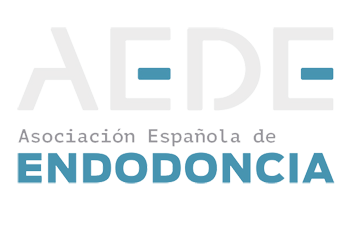Vol. 32 Núm. 1
Comparación del transporte radicular en conductos radiculares curvos utilizando las técnicas Twisted File® y Reciproc®
Por: Erick de los Santos Rosario1, José Javier Sánchez Rodríguez2, Raúl Luis García Aranda3
Resumen del artículo:
Artículo de Investigación
RESUMEN
Objetivo: La preparación del conducto radicular con un solo instrumento con movimiento reciprocante está generando preocupación acerca desu comportamiento en la preparación de los conductos. El propósito de este estudio fue comparar qué sistema (TwistedFiles® oReciproc®) producemenos transporte radicular en conductos curvos. Metodología: Se utilizaron 40 molares inferiores humanos recién extraídos con curvaturas entre25 y 35 grados, siguiendo la técnica de Schneider. Los molares fueron divididos aleatoriamente en dos grupos de 20 molares cada uno; Grupo1: se prepararon usando movimiento de rotación continua con limas Twisted Files® mientras que en el Grupo 2 se prepararon con movimientoreciprocante con limas Reciproc®. Se determinó el transporte del conducto radicular a través de CTScan midiendo la curvatura exterior e interiorantes y después de la preparación. Resultados: En ambos grupos se encontró transporte del conducto radicular. Los resultados se analizaronmediante la prueba t de Student. No hubo diferencias significativas en los grados y las direcciones de transporte entre TF y grupos RP (p <.05).Conclusiones: La instrumentación con movimiento reciprocante no aumentó el transporte del conducto radicular cuando se comparacon elmovimiento de rotación continua. El movimiento recíproco podría ser un método alternativo en la configuración del conducto radicular
PALABRAS CLAVE
Transporte en conductos radiculares; Twisted File®; Reciproc®.
ABSTRACT
Objective: The single-file root canal instrumentation technique using reciprocating motion is generating concern abou this behavior in root canals preparation.The purpose of this study was to compare which system Twisted Files® and Reciproc® produces less root transportation in curved root canal. Methodology: 40extracted human mandibular molars with curvature between 25-35 degrees following Schneider’s technique. All teeth were randomly divided into 2 groups of20 root canals each. Group 1 were prepared by using continuous rotation motion with Twisted File® Group 2 were prepared with reciprocating motion withReciproc® files, the root canal transportation was determined through CT Scan measuring the external and internal curvature before and after preparation. Results:Both studied preparations systems created root canal transportation. The results were analysed by the t Student test. There were no significant differences inboth the degrees and directions of transportation between TF and RP groups (P > .05). Conclusions: The reciprocating motion instrumentation did not increasedroot canal transportation when compared with continuous rotation motion. Reciprocating motion might be an alternative method in root canal shaping.
KEY WORDS
Canal transportation; Twisted File®; Reciproc®.






